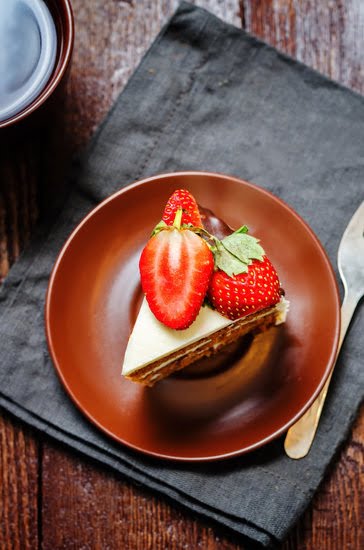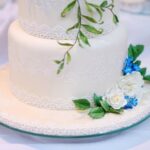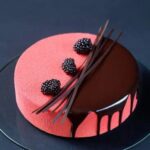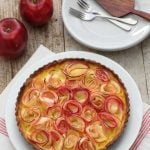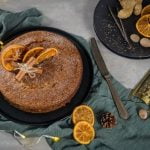Have you ever wondered how to decorate a cake with whipped cream? Whipped cream is a versatile and delicious topping that can take your homemade cakes to the next level. Whether you’re a novice baker or a seasoned pro, mastering the art of decorating with whipped cream can elevate your creations and impress your friends and family.
Decorating cakes with whipped cream not only adds visual appeal but also enhances the overall flavor and texture of the dessert. In this article, we will explore the importance of using whipped cream as a decorative element for cakes, as well as provide valuable tips and techniques for achieving professional-looking results.
From choosing the right type of whipped cream to troubleshooting common issues, we will cover everything you need to know to create stunning designs on your cakes. With step-by-step instructions and helpful insights, you’ll be able to confidently adorn your cakes with beautiful whipped cream decorations that are sure to be a crowd-pleaser at any gathering. Let’s dive into the world of cake decoration with whipped cream.
Choosing the Right Type of Whipped Cream
When it comes to decorating cakes with whipped cream, choosing the right type of whipped cream is crucial for achieving the desired results. There are several options available, each with its own unique properties and suitability for decorating. Here’s a look at the different types of whipped cream and how they can be used for cake decoration:
Types of Whipped Cream:
- Regular Whipped Cream: This is the most common type of whipped cream, made from heavy cream and sugar. It has a light and fluffy texture, making it ideal for creating soft swirls and delicate decorations on cakes.
- Stabilized Whipped Cream: Stabilized whipped cream is regular whipped cream that has been fortified with ingredients such as gelatin or cornstarch to help it hold its shape for longer periods. This type of whipped cream is great for more intricate designs and decorations that require stability.
Preparing the Cake:
Before you can start decorating your cake with whipped cream, it’s important to ensure that the cake itself is prepared properly. This includes leveling the layers to create a flat surface for decorating and applying a thin layer of frosting to act as a base for the whipped cream. A smooth and even surface will provide the best canvas for your whipped cream decorations.
Choosing the right type of whipped cream is just the first step in learning how to decorate a cake with whipped cream. Once you have selected the appropriate option for your desired design, you can move on to preparing your cake and applying these delicious decorations following our subsequent steps.
Preparing the Cake
Once the cake layers are leveled, it’s time to apply a layer of frosting before adding the whipped cream. This initial frosting layer, also known as a crumb coat, helps to seal in any loose crumbs and create a smooth surface for the whipped cream to adhere to. Spread a thin layer of frosting over the top and sides of the cake, then chill it in the refrigerator for about 15-30 minutes to allow the frosting to set.
After applying the crumb coat, continue with adding another layer of frosting as desired before decorating with whipped cream. The type of frosting used under the whipped cream can affect both flavor and stability. For example, a stable buttercream or ganache can provide structure and support for intricate designs made with whipped cream. Taking these steps will ensure that your cake is well-prepared for decorating with whipped cream and result in an impressive final product.
With these tips on preparing the cake for decorating with whipped cream, you’ll be ready to move on to creating beautiful designs and adding flavor and color to your creation. Mastering this essential step will set you up for success in achieving stunning cakes that not only look amazing but also taste fantastic.
Tips for Successful Piping
Decorating a cake with whipped cream can add a touch of elegance and deliciousness to any dessert. Piping whipped cream onto a cake not only enhances its appearance but also allows for creative designs and personalized touches. In this section, we will provide you with a step-by-step guide on how to pipe whipped cream onto your cake for beautiful and professional-looking designs.
Before starting the piping process, it is essential to ensure that the whipped cream is at the right consistency. It should be firm enough to hold its shape but still be easy to pipe. Here are the steps to achieve successful piping with whipped cream:
1. Prepare the piping bag: Transfer the whipped cream into a piping bag fitted with your desired decorating tip. Ensure that the bag is properly secured and twisted at the top to prevent any leakage.
2. Practice proper grip: Hold the piping bag at a 90-degree angle above the cake, applying gentle pressure to release the whipped cream.
3. Control your movements: Use steady and even pressure as you guide the piping tip along the surface of the cake. If you’d like to create different designs such as rosettes or swirls, practice these techniques on a separate surface before applying them to your cake.
By following these steps, you can achieve beautifully piped designs on your cake using whipped cream. Whether you’re creating intricate patterns or simple accents, mastering successful piping techniques will elevate the visual appeal of your cake and impress your guests with your decorating skills.
Adding Flavor and Color
Whipped cream is a versatile and delicious topping for cakes, and adding flavor and color can take your cake decorating to the next level. There are several ways to enhance the whipped cream to create a unique and personalized touch that will impress your guests.
First, let’s talk about flavoring the whipped cream. You can add extracts such as vanilla, almond, or coconut to give the whipped cream a delicious aroma and taste. Simply add a few drops of your chosen extract while you are whipping the cream until it reaches stiff peaks. Another option is to incorporate citrus zest or flavored liqueurs for a more complex flavor profile.
When it comes to coloring the whipped cream, you have various options available. Gel food coloring is preferred over liquid food coloring as it won’t change the consistency of the whipped cream. Start with a small amount of gel food coloring and gradually add more until you achieve your desired hue. You can also use natural ingredients like fruit purees or cocoa powder to naturally tint the whipped cream.
To ensure that your whipped cream remains stable and holds its shape when flavored or colored, be sure to use heavy cream with a high fat content of at least 35%. This will help prevent the whipped cream from deflating or separating, resulting in beautifully decorated cakes that look as good as they taste.
| Flavoring Whipped Cream | Coloring Whipped Cream |
|---|---|
| Add extracts such as vanilla, almond, or coconut | Use gel food coloring for best results |
| Incorporate citrus zest or flavored liqueurs | Start with a small amount and gradually add more for desired hue |
| Utilize natural ingredients like fruit purees or cocoa powder |
Adding Texture and Dimension
When it comes to decorating a cake with whipped cream, creating texture and dimension can take your design to the next level. There are various techniques that can be used to achieve this, such as creating rosettes and swirls with the whipped cream. These decorative elements not only add visual interest to the cake but also provide a professional and elegant touch.
One popular technique for adding dimension with whipped cream is by creating rosettes. This involves using a piping bag fitted with a star-shaped tip to create flower-like designs on the surface of the cake. By applying varying amounts of pressure to the piping bag, you can control the size and shape of each rosette, allowing for endless customization options.
In addition to rosettes, swirls are another effective way to add texture and dimension to a cake with whipped cream. This simple yet versatile technique involves applying even pressure while using a round piping tip to create smooth spirals or waves on the cake’s surface. Swirls can be used to fill in empty spaces or as borders around the edges of the cake.
Creating these decorative elements with whipped cream requires practice and precision. It’s important to use steady hand movements and consistent pressure when piping onto the cake to ensure an even and polished finish. With patience and attention to detail, anyone can master the art of adding texture and dimension with whipped cream.
| Technique | Description |
|---|---|
| Rosettes | Using a star-shaped piping tip, apply varying pressure to create flower-like designs on the cake |
| Swirls | Using a round piping tip, apply even pressure to create smooth spirals or waves for filling empty spaces or borders |
Troubleshooting Common Issues
When decorating cakes with whipped cream, it is common to encounter some issues that may affect the overall appearance of the cake. However, with a few troubleshooting tips and tricks, these problems can easily be fixed. In this section, we will address some of the common issues that may arise when decorating with whipped cream and provide solutions for fixing them.
Air Bubbles in the Whipped Cream
One common issue when decorating with whipped cream is the presence of air bubbles in the mixture. This can result in an uneven and unattractive appearance when piping the cream onto the cake. To prevent this problem, it is important to ensure that the whipped cream is not over-whipped. If air bubbles do form, gently tap the piping bag on a flat surface to release any trapped air before decorating the cake.
Difficulty in Creating Stable Designs
Another issue that may arise when decorating with whipped cream is difficulty in creating stable designs. This can occur if the whipped cream is too soft or warm, causing it to lose its shape once piped onto the cake. To overcome this problem, it is essential to chill both the mixing bowl and beaters before whipping the cream. Additionally, adding a stabilizer such as gelatin or cornstarch to the whipped cream can help maintain its shape for longer periods.
Weeping or Melting Whipped Cream
Weeping or melting whipped cream can be a frustrating issue when decorating a cake. This usually happens when the cake and/or environment are too warm, causing the whipped cream to lose its texture and stability. To prevent this from happening, it is important to refrigerate or even freeze the cake for a short period before decorating with whipped cream. Using stabilized whipped cream can also help maintain its structure even in warmer conditions.
By addressing these common issues and implementing these simple solutions, decorators can achieve beautiful results when using whipped cream to decorate cakes. With proper preparation and troubleshooting techniques, anyone can create stunning designs using this versatile and delicious medium for cake decoration.
Final Touches
When it comes to decorating cakes with whipped cream, the final touches can truly elevate the visual appeal and taste of the dessert. Adding fresh fruit or chocolate shavings can bring a pop of color, texture, and flavor that takes your cake to the next level. Here are some ideas for adding those finishing touches to your whipped cream-decorated cake.
Fresh Fruit Decorations
One of the most popular ways to complement whipped cream on a cake is by adding fresh fruit. Whether it’s strawberries, raspberries, blueberries, kiwi slices, or thinly sliced citrus fruits, these vibrant and juicy toppings not only add visual appeal but also provide a delightful burst of freshness with each bite. When using fresh fruit as decoration, consider the colors and flavors that will complement the overall theme and taste of the cake.
Chocolate Shavings and Curls
For those who love a touch of decadence, chocolate shavings or curls are an excellent addition to a whipped cream-decorated cake. Whether you opt for dark chocolate, milk chocolate, or white chocolate, shaving or curling it over the top of your cake creates an elegant and sophisticated look. Not only does this add a rich flavor profile to your dessert, but it also adds texture and a beautiful visual contrast when paired with fluffy whipped cream.
Edible Flowers and Nuts
Adding edible flowers such as lavender buds or rose petals can bring a whimsical and natural touch to your whipped cream-decorated cake. Additionally, incorporating chopped nuts like almonds, pistachios, or hazelnuts can add crunch and nuttiness to every bite. These unconventional decorations can add depth and complexity to your cake design while offering unique flavors and textures that will impress anyone who takes a slice.
By incorporating these additional decoration ideas into your whipped cream-decorated cakes, you can create stunning desserts that not only look beautiful but also taste delicious. The possibilities are endless when it comes to adding complementary elements to your cakes-so get creative and have fun experimenting with different combinations.
Conclusion
In conclusion, decorating cakes with whipped cream can truly elevate the overall appearance and taste of your baked creations. Whether it’s for a special occasion or just for a treat at home, using whipped cream to adorn your cakes adds a touch of elegance and creativity. From choosing the right type of whipped cream to adding flavor, color, texture, and dimension, there are endless possibilities for creating stunning designs that suit any preference or theme.
As we have discussed throughout this article, there are various considerations and techniques involved in decorating cakes with whipped cream. It is essential to prepare the cake properly before applying the whipped cream, ensuring a smooth and even surface for decorating.
Additionally, mastering the art of piping whipped cream is crucial for achieving beautiful designs, and incorporating different flavors and colors can add a personalized touch to your creations. Furthermore, troubleshooting common issues that may arise during the decorating process is also important in achieving professional-looking results.
Overall, learning how to decorate cake with whipped cream opens up a world of creativity and fun in the kitchen. The joy of seeing your finished creation adorned with swirls of luscious whipped cream is truly rewarding. So go ahead and experiment with different techniques and ideas to create your own masterpiece. With practice and patience, you’ll soon become an expert at decorating cakes with whipped cream, impressing friends and family with your delicious and visually stunning creations.
Frequently Asked Questions
Can Whipped Cream Be Used for Cake Decorating?
Whipped cream can absolutely be used for cake decorating. It adds a light and fluffy texture to the cake and can be easily piped into decorative designs, swirls, or rosettes.
How Do You Top a Cake With Whipped Cream?
When topping a cake with whipped cream, it’s important to start with a chilled bowl and beaters to ensure the cream whips up properly. Once whipped, simply spread or pipe the whipped cream onto the cake as desired. Add fruits, chocolate shavings, or sprinkles for extra flair.
How Early Can I Put Whipped Cream on a Cake?
Whipped cream can be put on a cake a few hours before serving, especially if the cake is stored in the refrigerator. However, if the cake will be sitting out at room temperature for an extended period of time, it’s best to add the whipped cream just before serving to prevent it from deflating or melting.

Welcome to our cake decorating blog! My name is Destiny Flores, and I am the proud owner of a cake decorating business named Cake Karma. Our mission is to provide delicious, beautiful cakes for all occasions. We specialize in creating custom cakes that are tailored specifically to each customer’s individual needs and tastes.

